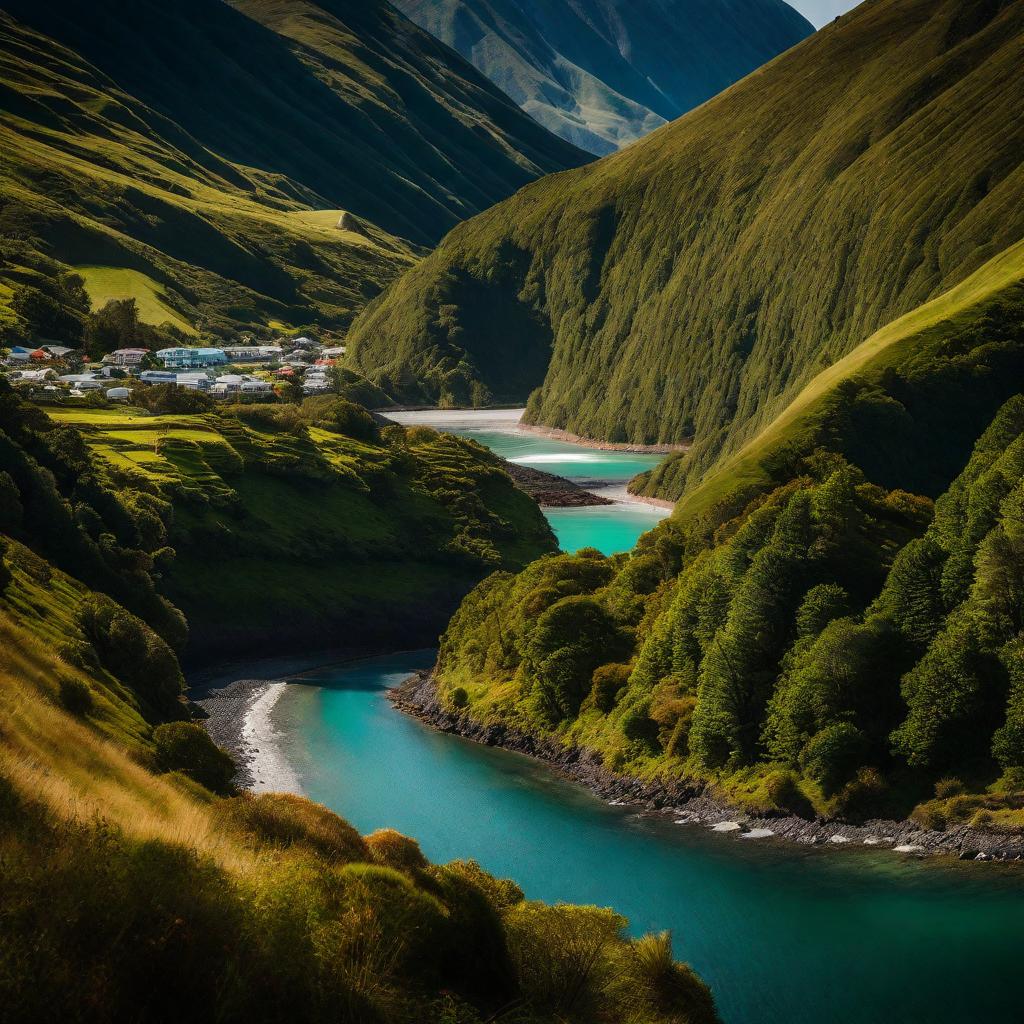Discovering Spain: 10 Must-Visit Travel Destinations
Welcome to “Discovering Spain: 10 Must-Visit Travel Destinations,” where we embark on an exhilarating journey through the captivating landscapes, rich history, and vibrant culture of Spain. From the enchanting streets of Barcelona to the ancient wonders of Andalusia, Spain offers a tapestry of experiences that beckon travelers from around the globe. Join us as we delve into the heart of this diverse and dynamic country, uncovering hidden gems and iconic landmarks alike.
Whether you’re a history buff, a foodie, or a nature enthusiast, Spain promises to captivate your senses and leave an indelible mark on your travel memories. So pack your bags and prepare for an adventure of a lifetime as we explore 10 must-visit destinations that showcase the essence of Spain’s allure and charm.
1. Barcelona :

A. Iconic architecture of Antoni Gaudí, including Sagrada Família and Park Güell
Barcelona, the vibrant capital of Catalonia, enchants visitors with a captivating blend of iconic architecture, bustling streets, and a culinary scene that tantalizes the taste buds. At the heart of the city’s allure lies the whimsical creations of renowned architect Antoni Gaudí, exemplified by the awe-inspiring Sagrada Família and the enchanting Park Güell. The Sagrada Família stands as a testament to Gaudí’s genius, with its intricate facades and towering spires that continue to defy architectural norms.
B. Bustling atmosphere of Las Ramblas and Gothic Quarter
Beyond Gaudí’s masterpieces, Barcelona pulsates with life along its famed thoroughfare, Las Ramblas, and within the labyrinthine streets of the Gothic Quarter. Here, the city’s diverse culture comes alive amidst the throngs of locals and tourists, who meander through bustling markets, historic squares, and hidden courtyards. The Gothic Quarter, with its medieval architecture and narrow alleys, exudes an atmosphere of mystery and charm, providing a glimpse into Barcelona’s rich history and heritage.
C. Vibrant culinary scene and nightlife
No visit to Barcelona is complete without indulging in its vibrant culinary scene and legendary nightlife. From traditional tapas bars to Michelin-starred restaurants, the city offers a culinary adventure for every palate, showcasing the freshest ingredients and innovative flavors of Catalan cuisine. As night falls, Barcelona transforms into a playground for revelers, with an array of bars, clubs, and live music venues that pulse with energy until the early hours of the morning.
2. Madrid
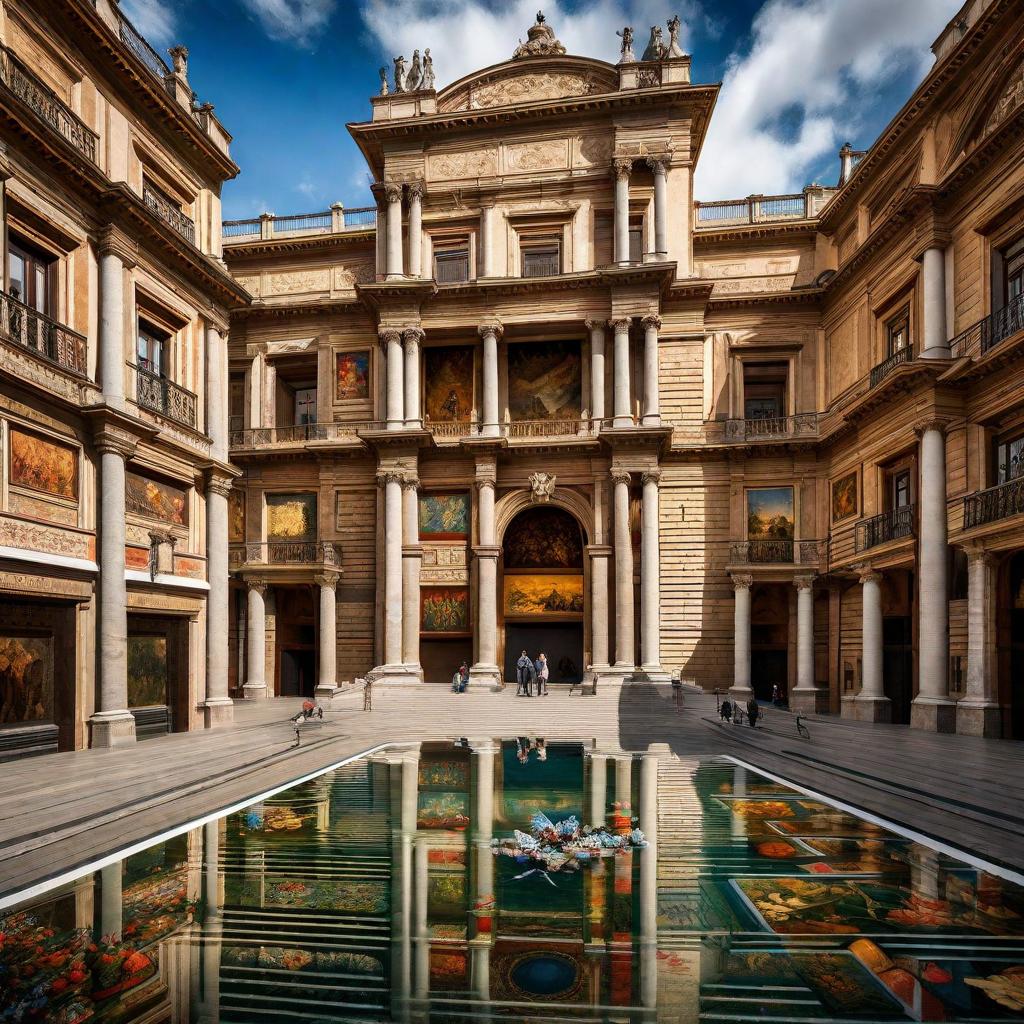
When exploring the vibrant city of Madrid, Spain, visitors are treated to a rich tapestry of cultural, historical, and natural wonders. A highlight of any visit is undoubtedly the A. Prado Museum, a revered institution renowned for its unparalleled collection of Spanish masterpieces. Housing works by iconic artists such as Velázquez, Goya, and El Greco, the museum offers a captivating journey through the evolution of Spanish art, from the Renaissance to the modern era.
In addition to the Prado, Madrid boasts numerous art galleries showcasing the country’s artistic prowess, providing visitors with diverse perspectives and styles. From the contemporary exhibits at the Reina Sofía Museum to the classical treasures of the Thyssen-Bornemisza Museum, art enthusiasts are spoiled for choice in this cultural hub.
For those with a penchant for history and architecture, the city offers a treasure trove of landmarks to explore. The Royal Palace stands as a majestic symbol of Spain’s royal heritage, boasting opulent interiors, magnificent gardens, and breathtaking views of the city. Nearby, the Plaza Mayor captivates with its grandeur, serving as a hub of activity and a window into Madrid’s storied past.
Amidst the hustle and bustle of urban life, Retiro Park provides a tranquil oasis for relaxation and outdoor activities. Spanning over 125 hectares, this sprawling green space invites visitors to stroll along tree-lined pathways, row across the serene lake, or simply unwind amidst picturesque gardens and sculptures. From leisurely picnics to energetic jogging sessions, Retiro Park offers something for everyone to enjoy amidst nature’s embrace.
In essence, Madrid’s blend of artistic mastery, architectural splendor, and natural beauty ensures that every visitor is treated to an unforgettable experience filled with wonder and discovery. Whether delving into the depths of art history, marveling at architectural wonders, or seeking solace in nature’s embrace, the Spanish capital offers a captivating journey for all who venture within its embrace.
3. Seville
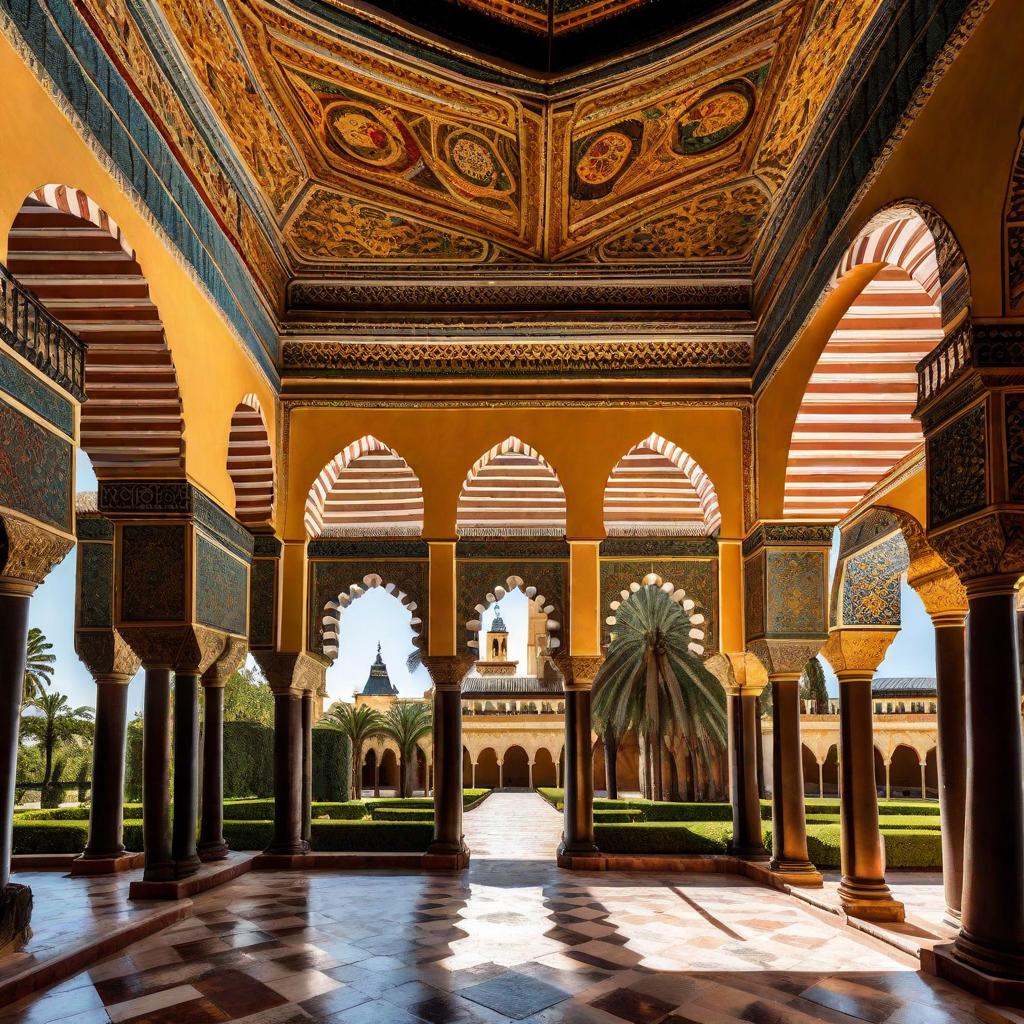
In the heart of Seville, Spain, lies a captivating tapestry of history, culture, and culinary delights awaiting exploration. A highlight of any visit is the majestic Alcázar Palace, a UNESCO World Heritage site renowned for its exquisite blend of Moorish, Gothic, and Renaissance architecture. Beyond its ornate halls and opulent chambers, the Alcázar’s stunning gardens transport visitors to a realm of enchantment, with intricately landscaped terraces, fragrant orange trees, and tranquil fountains offering a serene escape from the bustling city.
Adjacent to the Alcázar, the Cathedral of Seville stands as a testament to the city’s rich religious heritage and architectural prowess. Dominating the skyline with its towering Giralda Tower, the cathedral is not only the largest Gothic cathedral in the world but also houses priceless works of art and historical artifacts within its sacred walls. Ascending the Giralda Tower offers panoramic views of Seville’s sprawling cityscape, providing a breathtaking vantage point to appreciate the city’s beauty and grandeur.
As evening descends upon Seville, the historic Santa Cruz neighborhood comes alive with the soul-stirring rhythms of flamenco music and the tantalizing aromas of traditional tapas. Here, visitors can immerse themselves in the vibrant atmosphere of intimate flamenco shows, where passionate dancers and musicians captivate audiences with their raw emotion and electrifying performances. Meanwhile, winding cobblestone streets lead to quaint tapas bars and charming plazas, where locals and visitors alike gather to savor the culinary delights of Andalusian cuisine, from savory jamón ibérico to succulent seafood paella.
In essence, Seville beckons travelers on a journey of discovery, where ancient palaces, towering cathedrals, and lively neighborhoods converge to create an unforgettable tapestry of experiences. Whether wandering through the serene gardens of the Alcázar, marveling at the architectural wonders of the Cathedral and Giralda Tower, or immersing oneself in the vibrant culture of flamenco and tapas, Seville offers a feast for the senses and a glimpse into the soul of Andalusia.
4. Granada
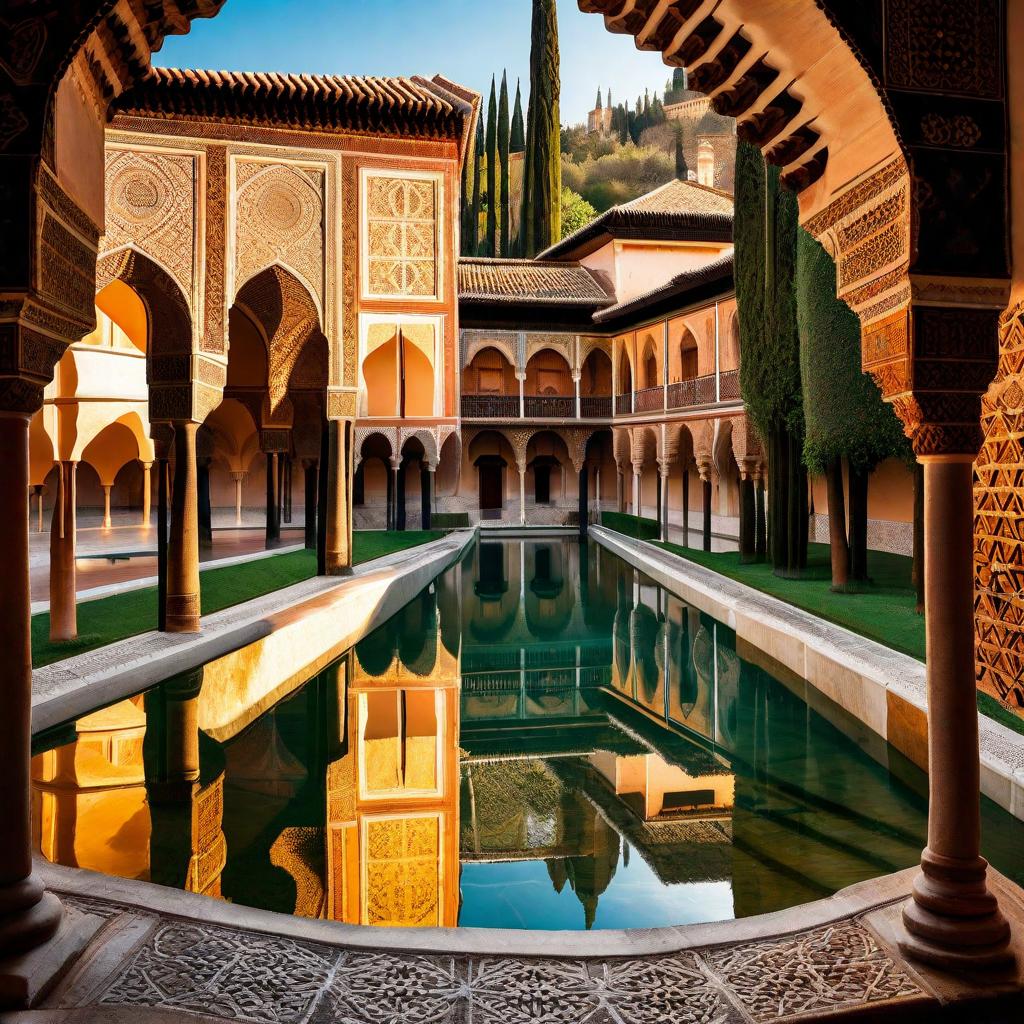
In the heart of Granada, Spain, lies a captivating tapestry of history, culture, and tradition, inviting visitors to embark on a journey of discovery through its timeless wonders. At the pinnacle of Granada’s allure stands the magnificent Alhambra Palace and Generalife Gardens, a UNESCO World Heritage site that epitomizes the splendor of Moorish art and architecture. With its intricate carvings, elaborate tilework, and serene courtyards, the Alhambra Palace is a testament to the region’s rich cultural heritage, while the Generalife Gardens offer a tranquil retreat adorned with lush greenery, colorful flowers, and trickling fountains, inviting visitors to wander and contemplate amidst natural beauty.
Venturing beyond the Alhambra, the Albayzín neighborhood beckons with its labyrinthine streets and Moorish architecture, offering a glimpse into Granada’s storied past. Here, whitewashed houses adorned with vibrant bougainvillea spill down the hillside, leading to hidden plazas and panoramic viewpoints that offer sweeping vistas of the Alhambra and the surrounding cityscape. Wandering through the Albayzín is like stepping back in time, where the echoes of centuries-old traditions and the scent of jasmine linger in the air, creating an atmosphere of timeless charm and intrigue.
For a truly immersive cultural experience, visitors need look no further than Sacromonte, a neighborhood renowned for its cave dwellings and vibrant flamenco performances. Carved into the hillsides overlooking Granada, these unique dwellings have been inhabited for centuries by the city’s Romani community, preserving their rich heritage and distinctive way of life. Here, visitors can delve into the soul-stirring rhythms of flamenco music and dance, as passionate performers captivate audiences with their raw emotion and electrifying performances, creating an unforgettable spectacle that resonates with the spirit of Andalusia.
5. Valencia :
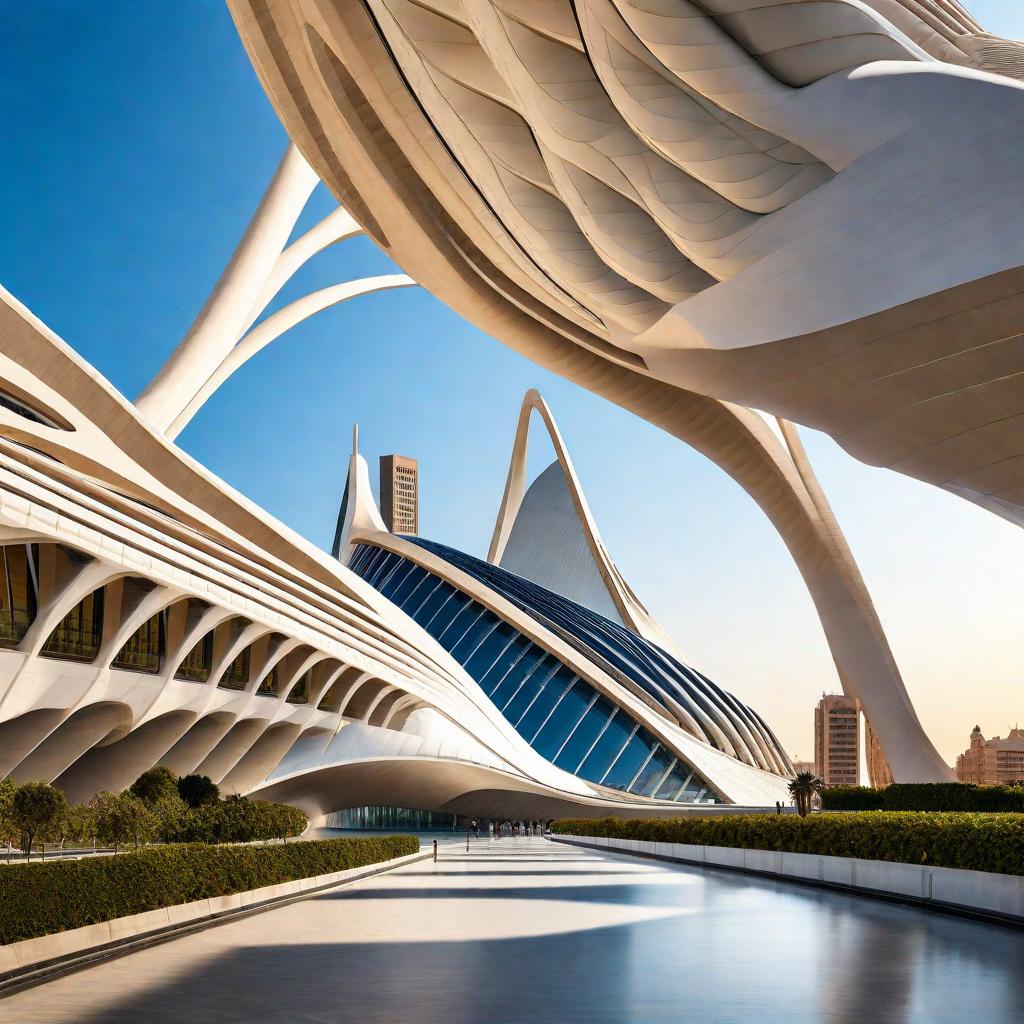
A. City of Arts and Sciences, a futuristic architectural complex:
- Architecture: The City of Arts and Sciences in Valencia, Spain, is a stunning example of modern architecture. Designed by Santiago Calatrava and Félix Candela, it features avant-garde structures that blend seamlessly with the surrounding environment.
- Attractions: Within the complex, visitors can explore various attractions, including the futuristic Hemisfèric, an IMAX cinema and planetarium, the interactive science museum known as the Museu de les Ciències Príncipe Felipe, and the stunning Palau de les Arts Reina Sofia, an opera house and performing arts center.
- Cultural Hub: The City of Arts and Sciences serves as a cultural hub, hosting exhibitions, concerts, and events that celebrate science, technology, and the arts. It is a symbol of Valencia’s commitment to innovation and creativity.
B. Lively Central Market and Mercado de Colón:
- Central Market: The Central Market of Valencia is one of the largest and oldest food markets in Europe. It is housed in a beautiful modernist building dating back to the early 20th century and offers a vibrant atmosphere where visitors can discover a wide array of fresh produce, meats, cheeses, and seafood.
- Mercado de Colón: Another architectural gem, the Mercado de Colón, is a stunning example of Valencian Art Nouveau. This market features a variety of gourmet shops, cafes, and restaurants set within a beautifully restored space adorned with intricate tilework and ornate ironwork.
- Culinary Delights: Both markets are beloved by locals and visitors alike for their bustling ambiance and diverse culinary offerings. From sampling traditional Spanish delicacies to enjoying international cuisine, the Central Market and Mercado de Colón are culinary destinations not to be missed in Valencia.
C. Picturesque beaches along the Mediterranean coast:
- Mediterranean Coastline: Valencia boasts a stunning stretch of coastline along the Mediterranean Sea, offering picturesque beaches that are perfect for sunbathing, swimming, and water sports.
- Variety of Beaches: From bustling urban beaches with vibrant promenades and amenities to secluded coves surrounded by natural beauty, Valencia’s beaches cater to a diverse range of preferences.
- Activities: Visitors can enjoy a wide range of activities along the coast, including beach volleyball, paddleboarding, sailing, and kite surfing. Additionally, the beachfront is lined with bars, restaurants, and cafes where visitors can relax and savor fresh seafood and refreshing drinks while taking in breathtaking views of the sea.
6. Cordoba :
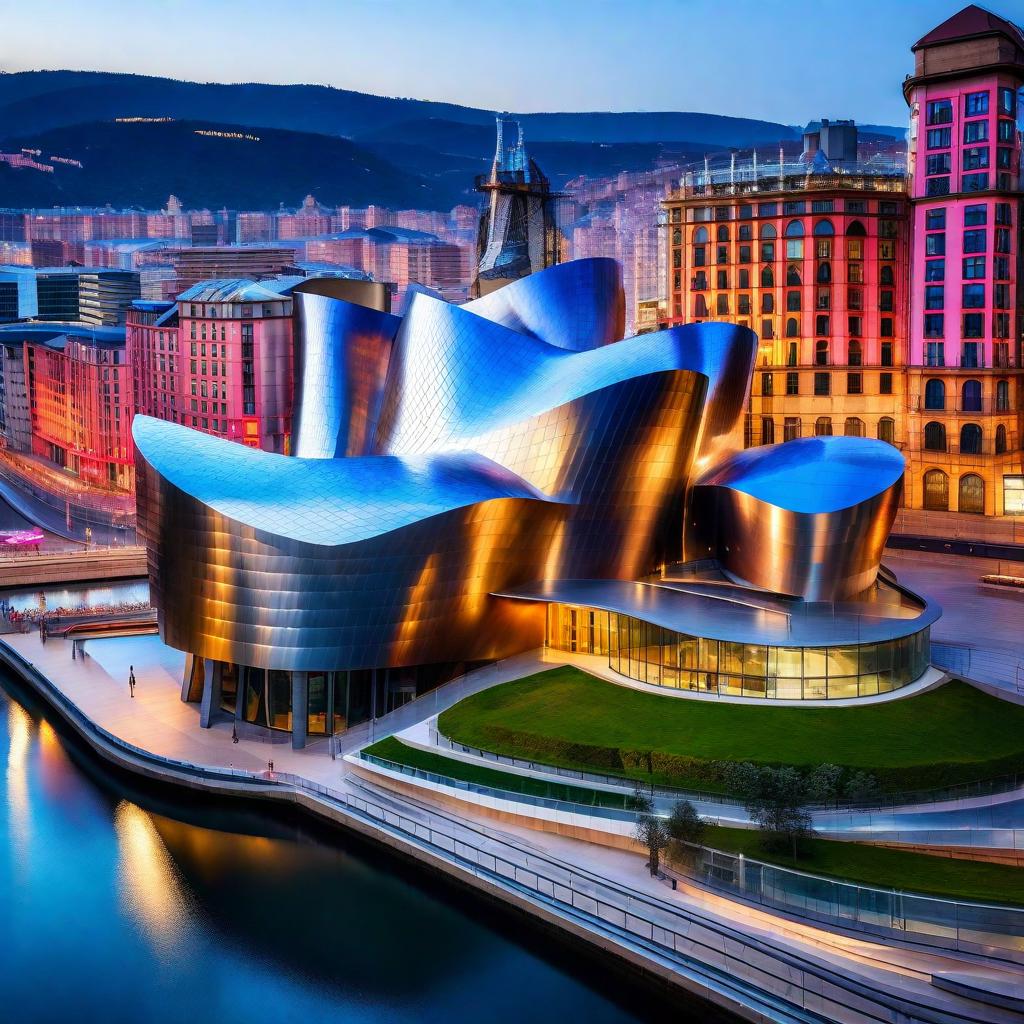
A. Guggenheim Museum Bilbao:
- Architectural Masterpiece: Designed by renowned architect Frank Gehry, the Guggenheim Museum Bilbao is celebrated worldwide for its innovative and striking design. Its flowing, titanium-clad curves and futuristic aesthetic have made it an icon of modern architecture.
- Collection of Contemporary Art: Beyond its architectural allure, the museum houses an impressive collection of contemporary art, featuring works by prominent artists such as Jeff Koons, Yayoi Kusama, and Richard Serra. Its rotating exhibitions and permanent installations offer visitors a dynamic and thought-provoking artistic experience.
- Cultural Landmark: Since its opening in 1997, the Guggenheim Museum Bilbao has transformed the city’s cultural landscape, attracting millions of visitors and revitalizing the local economy. Its impact extends beyond art, serving as a symbol of Bilbao’s resurgence and a testament to the transformative power of architecture and culture.
B. Casco Viejo (Old Town):
- Charming Streets: The Casco Viejo, or Old Town, is a labyrinth of narrow cobblestone streets, historic buildings, and picturesque squares. Its timeless charm and medieval architecture transport visitors back in time, offering a glimpse into Bilbao’s rich history and cultural heritage.
- Pintxos Bars: One of the highlights of the Casco Viejo is its vibrant culinary scene, particularly its bustling pintxos bars. These traditional Basque tapas bars offer a tantalizing array of small, savory dishes, typically enjoyed with a glass of local wine or cider. Exploring the Casco Viejo’s pintxos bars is not only a culinary adventure but also a social and cultural experience, where locals and visitors alike gather to savor the flavors of the region.
- Cultural Hub: In addition to its architectural and culinary delights, the Casco Viejo is a cultural hub, home to historic landmarks, artisan workshops, and cultural institutions. Visitors can explore the Gothic-style Santiago Cathedral, peruse the stalls of the Mercado de la Ribera, or discover local crafts and traditions in the neighborhood’s quaint shops and galleries.
C. Euskalduna Conference Centre and Concert Hall:
- Modern Venue: Situated along the banks of the Nervión River, the Euskalduna Conference Centre and Concert Hall is a striking example of contemporary architecture. Its sleek, glass facade and innovative design make it a standout landmark in Bilbao’s waterfront skyline.
- Cultural Events: The Euskalduna hosts a diverse range of cultural events, including concerts, opera performances, theater productions, and art exhibitions. Its state-of-the-art facilities and versatile spaces make it a premier destination for both local and international artists and audiences.
- Community Engagement: Beyond its role as a cultural venue, the Euskalduna plays an active role in the local community, offering educational programs, workshops, and outreach initiatives. It serves as a hub for creativity, collaboration, and cultural exchange, enriching the cultural fabric of Bilbao and fostering connections between artists, audiences, and the wider community.
7. Mallorca :

A. Stunning beaches and crystal-clear waters of Cala d’Or and Palma Nova
Introduction to Mallorca’s Coastal Beauty:
- Mallorca, the largest of Spain’s Balearic Islands, boasts an array of stunning beaches that draw visitors from around the world.
Cala d’Or: A Haven of Tranquility:
- Cala d’Or, nestled on the southeastern coast, is renowned for its picturesque coves and azure waters.
- Visitors can unwind on pristine beaches such as Cala Gran and Cala Esmeralda, where soft sands and tranquil waters create an idyllic setting for relaxation and sunbathing.
- Water sports enthusiasts can partake in activities like snorkeling, paddleboarding, and kayaking to explore the area’s marine life and hidden coves.
Palma Nova: Family-Friendly Fun:
- Palma Nova, situated on the southwestern coast, offers a vibrant atmosphere and family-friendly amenities.
- Its wide, sandy beaches, including Playa de Palma Nova and Playa Son Maties, provide ample space for sun-seekers and water sports enthusiasts alike.
- Visitors can enjoy a variety of beachfront restaurants, bars, and shops, as well as entertainment options such as mini-golf and water parks, making it an ideal destination for families and leisure travelers.
B. Serra de Tramuntana mountains for hiking and outdoor adventures
Introduction to Serra de Tramuntana:
- Serra de Tramuntana, a UNESCO World Heritage site, spans the northwest coast of Mallorca, offering breathtaking landscapes and outdoor adventures.
Hiking Trails amidst Natural Splendor:
- The mountains of Serra de Tramuntana boast an extensive network of hiking trails, ranging from leisurely strolls to challenging treks.
- Hikers can explore rugged terrain, ancient olive groves, and panoramic viewpoints that offer sweeping vistas of the coastline and surrounding villages.
- Popular routes include the GR 221, also known as the “Dry Stone Route,” which traverses the length of the mountain range, and the picturesque villages of Deià and Valldemossa, which provide charming rest stops along the way.
Outdoor Activities and Adventure:
- Beyond hiking, Serra de Tramuntana offers a wealth of outdoor activities, including mountain biking, rock climbing, and canyoning.
- Adventurous travelers can embark on guided excursions to explore hidden caves, pristine waterfalls, and rugged cliffs, immersing themselves in the natural beauty and adrenaline-fueled thrills of the mountains.
C. Palma de Mallorca’s historic center and impressive Gothic cathedral
Introduction to Palma de Mallorca:
- Palma de Mallorca, the island’s capital, boasts a rich history and cultural heritage, evident in its historic center and iconic Gothic cathedral.
Historic Center: A Tapestry of Culture:
- The historic center of Palma de Mallorca is a maze of narrow streets, charming squares, and historic buildings that reflect the city’s diverse cultural influences.
- Visitors can wander through the labyrinthine alleys of the Old Town, admiring architectural gems such as the Arab Baths, the Royal Palace of La Almudaina, and the Church of Santa Eulalia.
- The bustling markets of Mercat de l’Olivar and Mercat de Santa Catalina offer a glimpse into local life, with stalls brimming with fresh produce, artisanal crafts, and traditional delicacies.
Gothic Cathedral: A Symbol of Majesty:
- Dominating the skyline of Palma de Mallorca is its crowning jewel, the Cathedral of Santa Maria, also known as La Seu.
- This majestic Gothic cathedral, with its soaring spires and intricate facade, is a masterpiece of medieval architecture and a symbol of the city’s spiritual and cultural identity.
- Inside, visitors can marvel at stunning stained glass windows, ornate altars, and the renowned rose window, while ascending to the rooftop offers panoramic views of the city and the shimmering waters of the Mediterranean Sea
8. San Sebastián
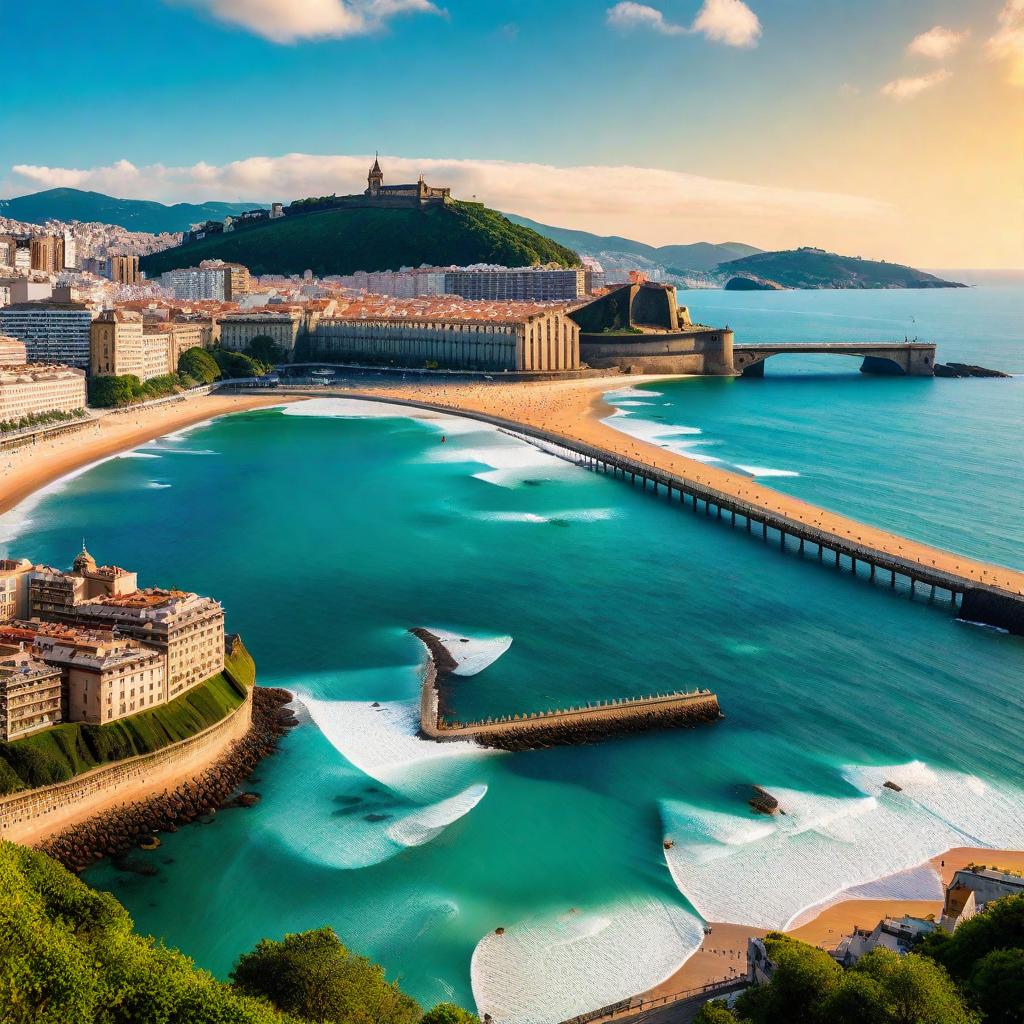
A. La Concha Beach and breathtaking views from Monte Igueldo:
La Concha Beach: Nestled in the picturesque city of San Sebastián, La Concha Beach stands as a jewel of the Basque coastline. With its crescent-shaped shoreline, fine golden sand, and azure waters, it’s hailed as one of Europe’s most beautiful urban beaches. Visitors can bask in the sun, swim in the refreshing waters, or stroll along the promenade while admiring the panoramic views of the bay and surrounding mountains.
Monte Igueldo: For unparalleled vistas of San Sebastián and its stunning coastline, a journey up Monte Igueldo is a must. Whether by funicular or a scenic hike, reaching the summit rewards visitors with breathtaking views that stretch as far as the eye can see. From the iconic La Concha Beach to the rugged cliffs of Monte Urgull, the panoramic vista from Monte Igueldo offers a captivating perspective of this coastal gem, perfect for photography enthusiasts and nature lovers alike.
B. Old Town (Parte Vieja) famous for its pintxos bars and culinary delights:
Parte Vieja Atmosphere: Stepping into San Sebastián’s Old Town is like stepping into a gastronomic paradise. The narrow streets are alive with the buzz of locals and tourists alike, drawn to the tantalizing aromas emanating from the countless pintxos bars and traditional eateries that line the cobblestone alleys. Here, culinary delights await around every corner, from savory pintxos (Basque tapas) showcasing the region’s finest ingredients to hearty traditional dishes bursting with flavor.
Pintxos Bars: Parte Vieja is renowned for its vibrant pintxos culture, where each bar competes to offer the most creative and delicious bites. Visitors can embark on a culinary adventure, hopping from bar to bar, sampling an array of pintxos ranging from simple classics like jamón ibérico and grilled shrimp to more elaborate creations like foie gras and seafood croquettes. With each bite, diners are treated to a symphony of flavors that reflects the rich culinary heritage of the Basque Country.
C. Miramar Palace and Gardens offering panoramic views of the city and bay:
Miramar Palace: Perched on the cliffs overlooking the Bay of La Concha, Miramar Palace exudes elegance and grandeur. Built in the 19th century as a royal residence, it now serves as a cultural center and public park, inviting visitors to explore its manicured gardens and marvel at its architectural beauty. From its terraces, visitors can enjoy sweeping vistas of San Sebastián’s skyline, the shimmering bay, and the verdant surrounding hills, providing a perfect backdrop for leisurely strolls and moments of tranquility.
Panoramic Views: The vantage point offered by Miramar Palace and Gardens is unparalleled, offering visitors a panoramic perspective of San Sebastián’s natural and architectural wonders. From the bustling city center to the serene coastline, the view encompasses the essence of this coastal paradise, capturing the juxtaposition of urban sophistication and natural beauty that defines San Sebastián. Whether admiring the sunset over the bay or simply taking in the breathtaking scenery, a visit to Miramar Palace promises unforgettable moments and lasting memories.
9. Santiago de Compostela :
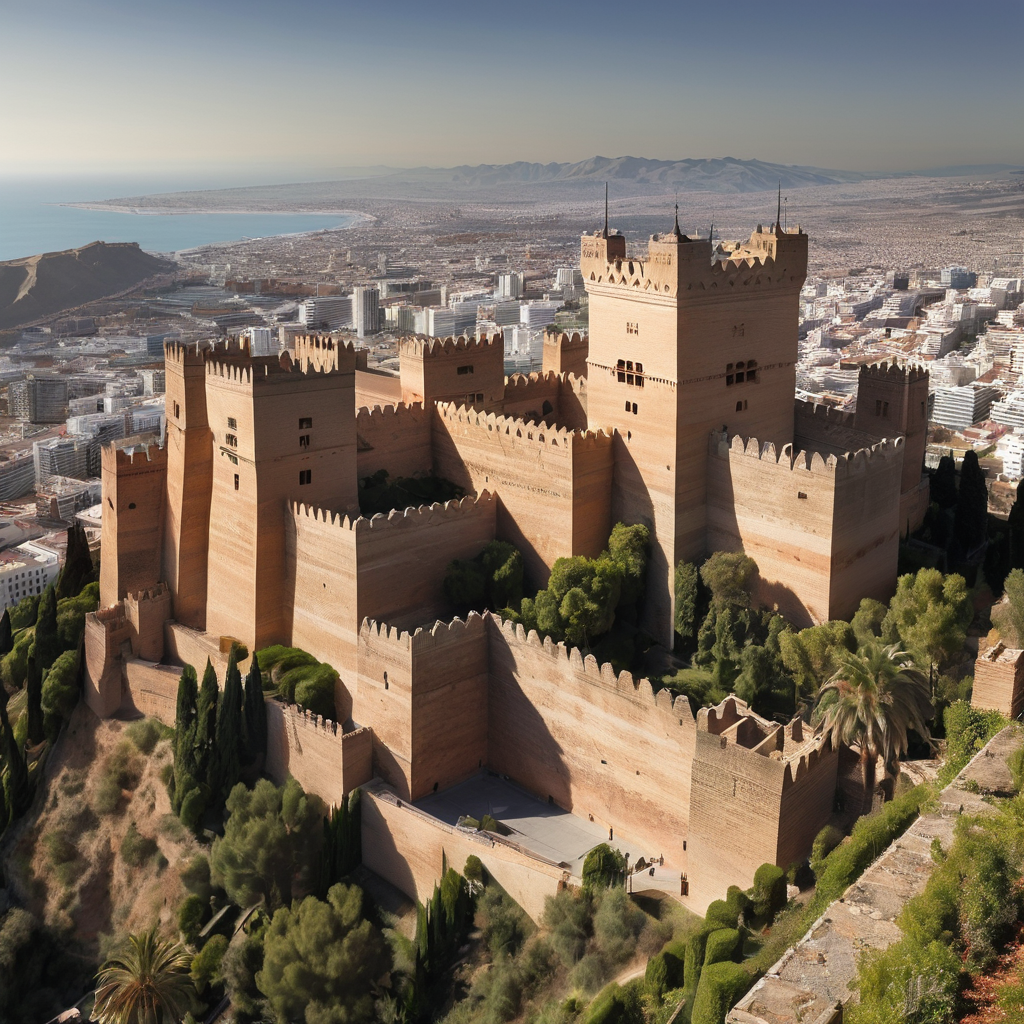
Santiago de Compostela: A Pilgrim’s Haven
Historical Significance: Santiago de Compostela holds profound historical and religious significance as the final destination of the Camino de Santiago pilgrimage route. For centuries, pilgrims from across Europe have journeyed to the city’s majestic Cathedral of Santiago de Compostela, believed to house the remains of the apostle St. James. This rich history imbues the city with a palpable sense of spirituality and reverence, attracting visitors seeking both physical and spiritual renewal.
Architectural Splendor: The city’s architectural landscape is a testament to its illustrious past, characterized by stunning examples of Romanesque, Gothic, and Baroque architecture. The Cathedral of Santiago de Compostela, with its intricate façade, soaring towers, and ornate interior, stands as the crowning jewel of the city, drawing visitors with its awe-inspiring beauty and sacred allure. Additionally, Santiago’s charming old town, with its narrow cobblestone streets, picturesque squares, and historic buildings, invites exploration and discovery around every corner.
Cultural Vibrancy: Beyond its religious significance and architectural marvels, Santiago de Compostela pulsates with cultural vibrancy and artistic expression. The city is home to numerous museums, galleries, and cultural institutions that showcase Galician art, history, and folklore. Visitors can immerse themselves in the lively atmosphere of the local markets, where vendors peddle fresh produce, artisanal crafts, and traditional delicacies, providing a sensory feast for the curious traveler.
Culinary Delights: Galicia’s rich gastronomic heritage takes center stage in Santiago de Compostela, where visitors can indulge in a culinary journey through the region’s diverse flavors and culinary traditions. From hearty Galician stews and succulent seafood dishes to crisp Albariño wines and delectable pastries, the city’s restaurants, taverns, and cafes offer a tantalizing array of culinary delights sure to satisfy every palate.
10. Málaga:
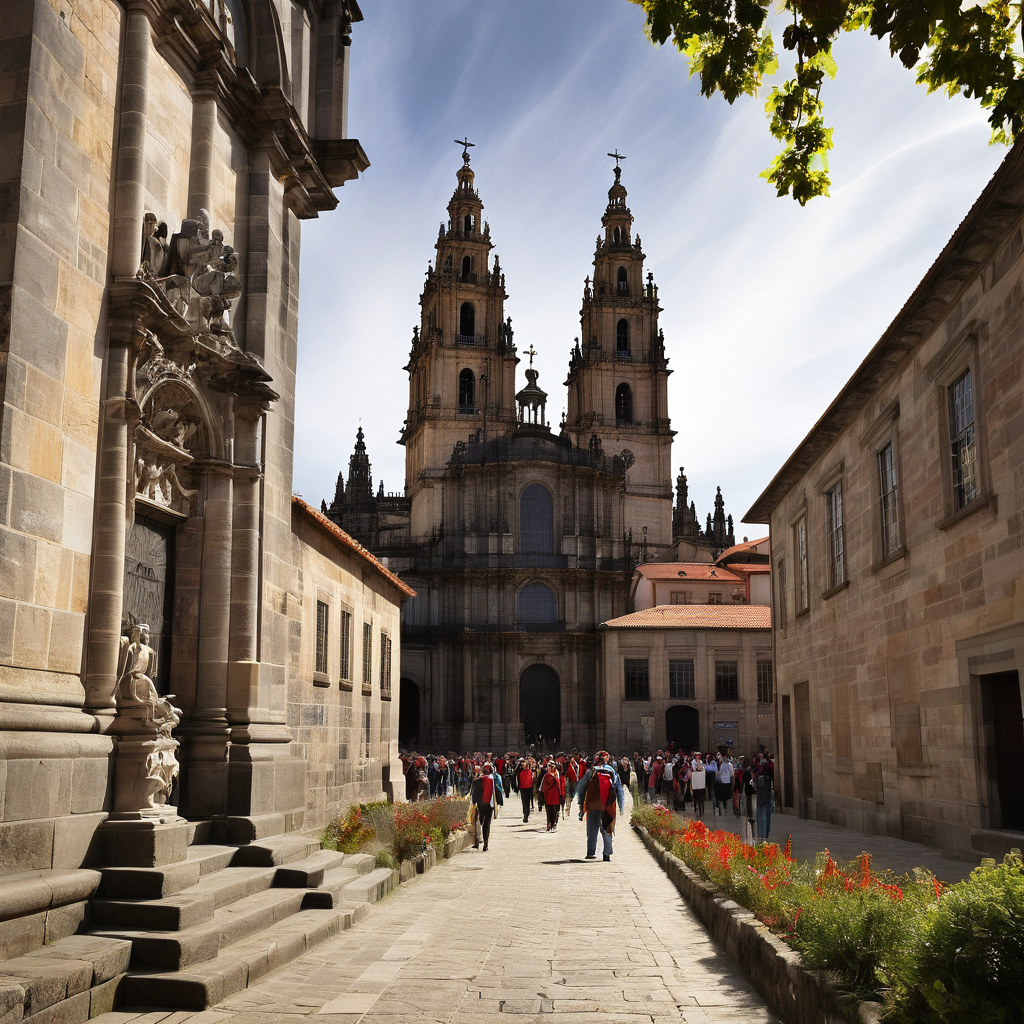
Historical Landmarks:
- Málaga boasts a wealth of historical landmarks that reflect its storied past. The imposing Alcazaba, a Moorish fortress dating back to the 11th century, stands as a testament to the city’s Islamic heritage, offering panoramic views of the city and sea from its ramparts.
- Adjacent to the Alcazaba lies the Roman Theatre, a well-preserved relic from Málaga’s Roman era. Visitors can wander among the ancient ruins and imagine the theatrical performances that once graced its stage, providing a glimpse into the city’s ancient past.
Cultural Attractions:
- Málaga is a cultural hub, home to a myriad of museums and art galleries that celebrate its artistic heritage. The Picasso Museum pays homage to the city’s most famous native son, showcasing a comprehensive collection of works spanning the artist’s prolific career.
- For a deeper dive into Málaga’s artistic legacy, visitors can explore the Centre Pompidou Málaga, a contemporary art center housed within a striking glass cube. Here, avant-garde exhibitions and interactive installations showcase the cutting-edge creativity that defines modern art.
Coastal Charms:
- With its pristine beaches and sparkling waters, Málaga offers the perfect escape for sun-seekers and water enthusiasts alike. The Playa de la Malagueta beckons with its golden sands and lively promenade, where visitors can soak up the Mediterranean sun or indulge in a refreshing dip in the sea.
- Beyond the beaches, Málaga’s picturesque waterfront is dotted with charming cafes, seafood restaurants, and tapas bars, where visitors can savor the flavors of Andalusian cuisine while admiring panoramic views of the sea.
Gastronomic Delights:
- Málaga’s culinary scene is a feast for the senses, with a diverse array of restaurants, tapas bars, and markets offering a tantalizing array of flavors and dishes. From traditional seafood paella to innovative fusion cuisine, there’s something to satisfy every palate.
- The Atarazanas Market is a culinary treasure trove, where visitors can sample local delicacies and browse stalls brimming with fresh produce, seafood, and artisanal products. Here, the sights, sounds, and aromas of Málaga’s vibrant food culture come alive, providing a true taste of the city’s culinary heritage.
Also Read : Top 10 Travel Destinations in Switzerland
Conclusion :
we have explored 10 must-visit travel destinations in Spain, each offering a unique blend of attractions, history, and cultural significance. From the iconic architecture of Barcelona to the majestic palaces of Granada, and from the vibrant streets of Madrid to the serene beaches of Mallorca, Spain is a treasure trove of experiences waiting to be discovered.
I encourage travelers to go beyond the familiar and venture off the beaten path, as Spain has much more to offer than meets the eye. Whether it’s wandering through hidden alleyways, sampling local cuisine at quaint eateries, or engaging with locals to learn about their traditions, embracing the essence of Spain will undoubtedly lead to unforgettable memories.
FAQs :
Q: What are the must-visit destinations in Spain? A: Spain offers a plethora of must-visit destinations, including Barcelona, Madrid, Seville, Granada, Valencia, Cordoba, Bilbao, Mallorca, San Sebastián, and many more.
Q: What makes Barcelona a must-visit destination in Spain? A: Barcelona is renowned for its iconic architecture by Antoni Gaudí, vibrant atmosphere along Las Ramblas, rich history in the Gothic Quarter, and diverse culinary scene and nightlife.
Q: Why should travelers explore Madrid? A: Madrid boasts world-class art galleries like the Prado Museum, historical landmarks such as the Royal Palace and Plaza Mayor, and tranquil retreats like Retiro Park.
Q: What attractions does Seville offer? A: Seville captivates visitors with its majestic Alcázar Palace and gardens, awe-inspiring Cathedral and Giralda Tower, and authentic Flamenco shows in the Santa Cruz neighborhood.
Q: Why is Granada a must-visit destination in Spain? A: Granada is famous for the breathtaking Alhambra Palace and Generalife Gardens, the charming Albayzín neighborhood, and the vibrant flamenco performances in Sacromonte.
Q: What makes Valencia stand out as a travel destination? A: Valencia boasts the futuristic City of Arts and Sciences, lively markets like the Central Market, and picturesque Mediterranean beaches.
Q: Why should travelers visit Cordoba? A: Cordoba is home to the UNESCO-listed Great Mosque-Cathedral, the charming Jewish Quarter, and historic landmarks like the Roman Bridge and Alcázar de los Reyes Cristianos.
Q: What attractions draw visitors to Bilbao? A: Bilbao’s highlights include the iconic Guggenheim Museum Bilbao, the charming Casco Viejo with its pintxos bars, and cultural events at the Euskalduna Conference Centre.
Q: What does Mallorca offer to travelers? A: Mallorca entices with stunning beaches like Cala d’Or and Palma Nova, the scenic Serra de Tramuntana mountains, and the historic center of Palma with its Gothic cathedral.
Q: Why should travelers include San Sebastián in their Spain itinerary? A: San Sebastián boasts the beautiful La Concha Beach, the culinary delights of the Old Town, and panoramic views from Miramar Palace and Gardens.

